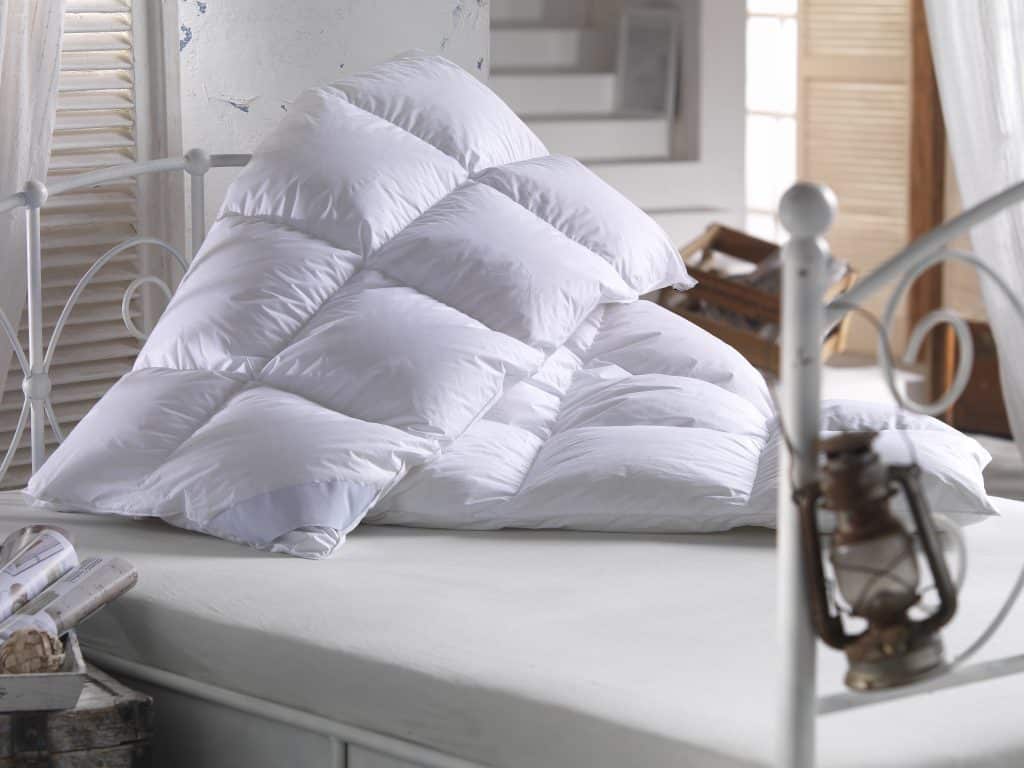Duvets
What Tog Duvet to Use for Winter?
Did you know that we spend almost a third of our lives sleeping? Since we spend so much time in bed, it makes sense that certain investments should be made to ensure that we get a good night’s sleep.
For many people, regulating temperature is very important especially if they live in countries where seasons change. This means investing in the right bedding that can help cool them down during the summer season and keep them warm during winter nights.
However, bedding can be surprisingly confusing. Duvets, for example, come in different tog ratings. They are also filled with different materials. How does one choose the right tog and what is a tog in the first place?
If you’re confused about tog ratings and duvets, you’ve come to the right place because this article will tackle what tog duvet to use during winter and the different fillings that are used by manufacturers.
What is a Tog?

A tog is a universal unit of measurement used to rate how warm a duvet is. You’ve probably seen this on duvet labels but you never really understood the meaning. The higher the tog rating, the warmer the duvet. It refers to how efficient the duvet is in trapping warm air to keep you better insulated when you sleep.
The tog usually ranges from 1, which is the lightest, to 15, the warmest. During warm months, a duvet with 1 to 4.5 tog is ideal while 13 to 15 tog is better for winter use.
However, the season should not be the only consideration for choosing a tog rating. For example, you could use the heating in your house that can help you keep warm. In this instance, a lighter tog can be used for sleeping even during the winter. Small children should also use lighter tog ratings because duvets with higher tog tend to be heavier and can suffocate them while shifting during the night.
The material used by the manufacturer can also impact how warm or cool the duvet is, no matter the rating. Down or feather duvets are usually more efficient at retaining heat compared to synthetic fillings. This means that you might not have to use a duvet with a high tog rating during winter because you don’t need as much filling to achieve the same warmth.
Therefore, there is no exact rule or science to choosing the best tog to use in winter or other seasons. It is better to use your personal experience and take into consideration the temperature of your bedroom so that you can figure out what tog rating to use during the winter months. You can either buy several duvets with different ratings and change according to seasons or you can buy an 8 or 9 tog duvet to use all year round.
Duvet Filling
Generally, there are 2 types of duvet fillings used by manufacturers: synthetic and natural. Synthetic duvets are ideal for allergy sufferers while natural fillings are a good choice for those who want a lighter duvet.

Natural Filling
Down is a type of feather. Duck, goose and other bird feathers are used as a filling material. The feathers are taken from the breast area of the bird. They are very light and have amazing insulation.
Hungarian, Swedish and Canadian down are good options because these countries are located in cold regions, so the feathers are naturally designed to retain heat.
Feather duvets are less expensive than down. The main difference is the size of the feather. In down duvets, the feathers are taken from the breast of the birds, so they are smaller and lighter. However, feather duvets use bigger feathers. This means that they are taken from the other parts of the bird. Therefore, feather duvets are heavier than down duvets.
Just as the name implies, down and feather duvets use a mixture of the two different types of feathers. This is a good choice if you’re looking for weight and warmth. This type of duvet is usually priced in the middle, making it an affordable option compared to all-down duvets.
Silk duvets are a good option for allergy sufferers who want a natural filling. Generally speaking, manufacturers usually use mulberry silk floss for filling. This is a good choice for an all-season duvet because silk is a poor conductor of heat; in other words, heat is retained because silk is a good insulator during the cold months and breathable during the summer. This keeps your body temperature stable so you get a good night’s rest.
Silk is also lightweight. It wicks away moisture from the skin so that you’re dry and comfortable all night long.
Wool is another hypoallergenic choice. Thanks to its amazing temperature-control properties, it can keep you warm and cool all year long. It is good at trapping air but is also breathable. Wool also has moisture-wicking abilities, which means moisture and hot air are drawn away from you when it’s hot.
Synthetic Filling
Hollowfibre is designed to trap warmth. The hollow centre traps the air while providing loft at the same time. Hollowfibre duvets are light even if you buy one with a high tog rating. If you have allergies, look for a hollowfibre duvet that has anti-allergy treatment.
Microfibre is just as luxurious as down and other natural filling options. It is lighter than feather-filled duvets. This is a good choice if you want an extra-soft and cosy feeling.
Takeaway
A good night’s rest starts with good foundations. Many people know that investing in the right pillows and mattresses can make a big difference in sleep quality. However, paying attention to tog rating can also impact the quality of your sleep, especially during the winter months.
Keeping warm in the winter is very important because cold weather can impact how your body fights off viruses and bacteria. Choosing the right kind of duvet with the right filling and tog rating can protect you against the drop in temperature so that you can stay healthy despite the weather.

